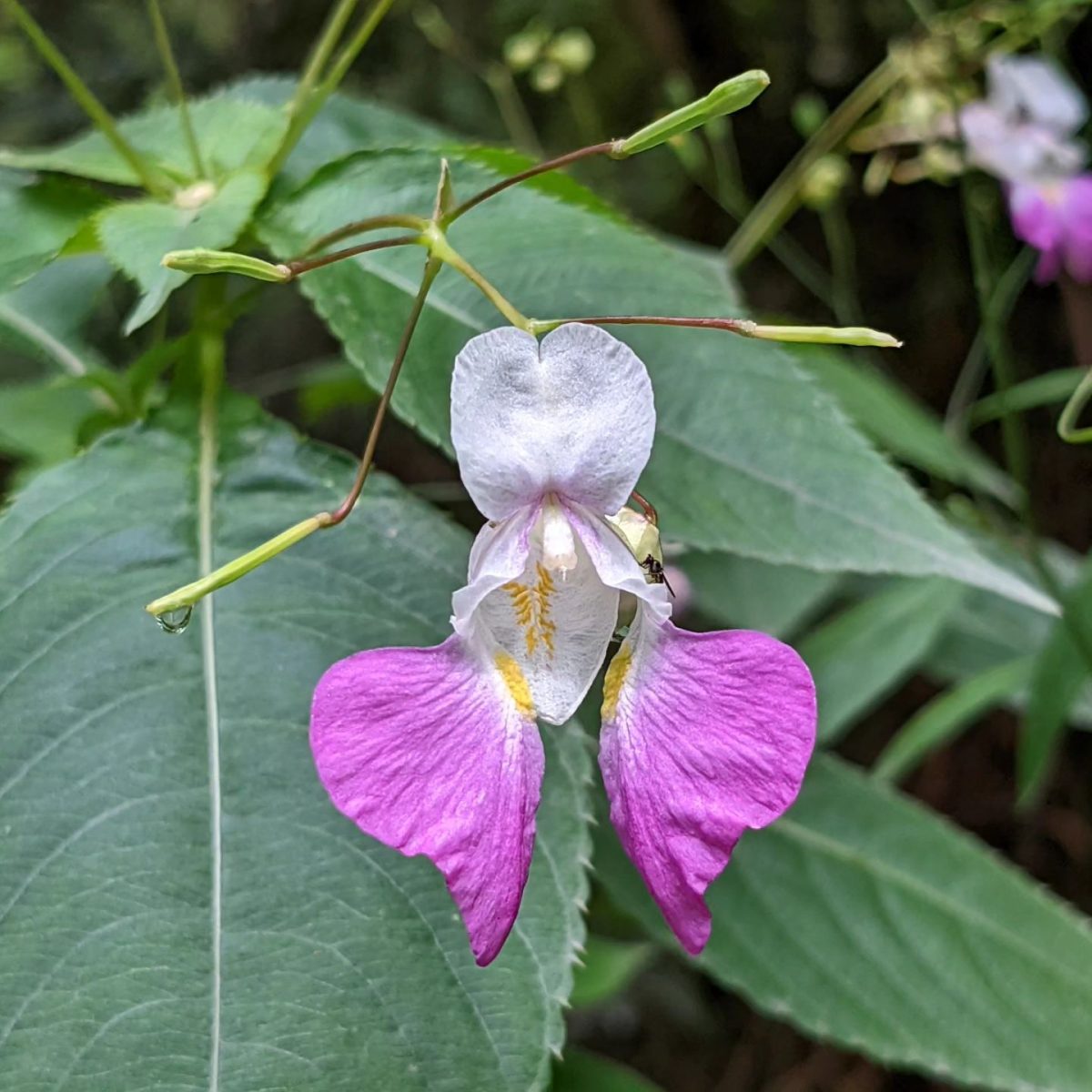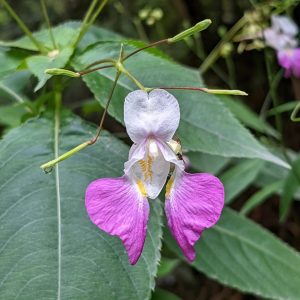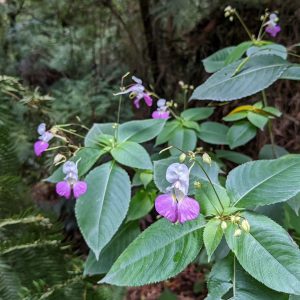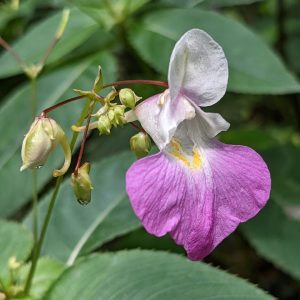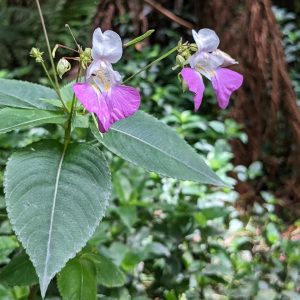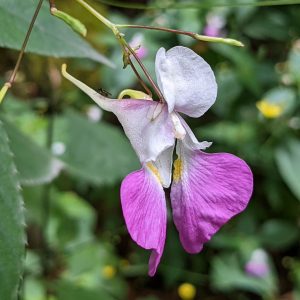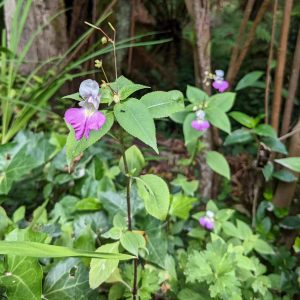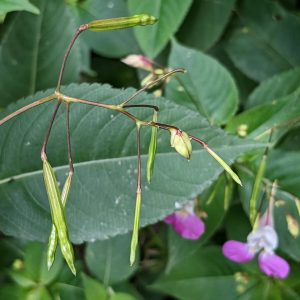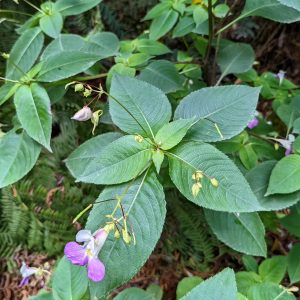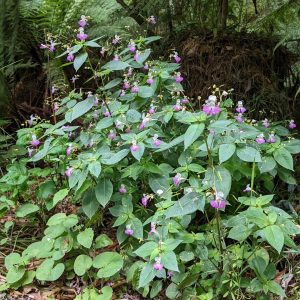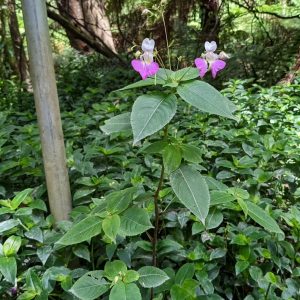Kashmir Balsam / Touch-me-not (Impatiens balfourii), originally a Himalayan annual elevated through horticulture to global woodland pest.
The similar species, Himalayan Balsam (I. glandulifera), was listed by J. and J. Rule for sale at Melbourne in 1860, although by the 1880s it remained sufficiently uncommon that a columnist in the Australasian, discussing its use in England, described it as ‘not, to our knowledge, grown in Victorian gardens.’ A few other scattered recommendations followed, often with reference to its use in English gardens and as a nectar supply for bees.
Impatiens balfourii was only described in 1903, although descendants of this species were likely sold in some markets as I. glandulifera prior to being separately described, and both are now invasive across Europe and in temperate Asia and North America. In Australia, both of these annual species would presumably have arrived initially as ornamental packet seeds.
According to the Atlas of Living Australia and overseas sources, these plants can be known by the common name ‘Poor Man’s Orchid,’ however this name does not seem to have been associated with the species in Australian popular accounts. Here, the name ‘Poor Man’s Orchid’ has historically been used for Irises and for the superficially similar but unrelated Schizanthus, a nightshade genus.
Kashmir Balsam was first recorded in a naturalised setting in Victoria in 1999 on the banks of the Merri Creek at Coburg. It was then identified growing wild along Dandenong roadsides in the early 2000s, where it is now known from various sites in back of Mount Dandenong and Kalorama, and along Sassafras Creek; observations have also been recently recorded at Warburton.
Kashmir Balsam’s occurrences in Victoria have been attributed to localised spread from nearby garden plantings, however its recurring appearance on damp roadsides and creek banks suggests that once over the garden gate the plant can be spread further by vehicles and waterborne erosion.
View Original Post on Instagram
Search for information about Impatiens balfourii in the Flora of Victoria
View information and occurrences of Impatiens balfourii on the Atlas of Living Australia
